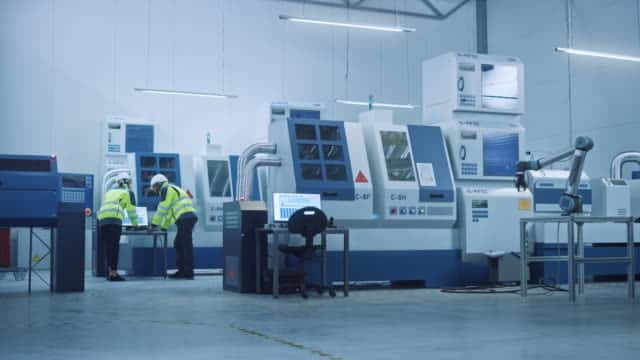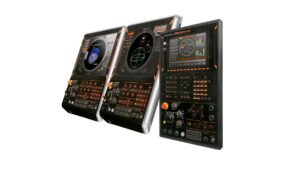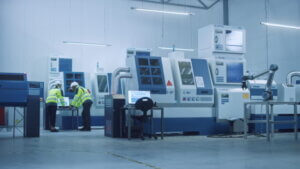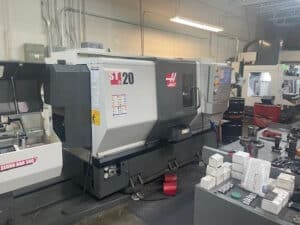Used CNC machines are excellent machines that can streamline production and increase the profitability of a business. They are very large, intricate machines that require proper use in order to keep the machine and operator safe. Below we discuss the top five tips and rules for safely operating your used CNC machine with less waste and higher productivity.
CNC Machine Safety Checklist
It is always best to be overly prepared before operating a CNC machine. To make the process as safe as possible, have a safety checklist before you begin any machining. A basic pre-start checklist should include:
- Making sure the machine isn’t already in process of running a program.
- Visually checking surfaces and moving parts for problems.
- Checking for excess debris, dust or dirt
- Confirming the spindle is set in the right direction.
- Verifying the machine safety guards are in place
When performing the visual inspection for cracks and chips, you should also check that the object being machined is fastened currently. You should also make sure everyone using the machine is qualified; like any power tool, novices can cause a disaster. Lastly, everyone who uses power equipment in your shop should know emergency procedures and basic first aid.
Eye & Ear Protection
When operating a CNC machine it is mandatory to wear proper ear protection and safety glasses, this helps to protect ears from the loud noises the machine can make. The safety glasses help prevent any flying debris from getting into one’s eyes. If the area is cleared and cleaned properly before use then there should be no flying debris, however it is still important to always wear safety glasses to protect your eyes.
Attire
Closed toed shoes are a must when operating a CNC machine or CNC lathe. Safety boots are the best thing to wear, however durable sneakers work as well. This way your feet are protected from any falling objects or debris that might escape the machine while in use.
If you or someone operating a CNC machine has long hair it should be tied back and covered to make sure it does not get stuck in the machine and cause serious injury.
Safe Operation
Whenever the CNC machine is on, there should be no one around the machine except the CNC operator. Others should be warned the machine is in operation and to stand clear and stay away from the machine. Avoid touching the cutting edges when handling or passing tools for the machine. This will ensure no cuts or scrapes happen. When you are finished using the machine, ensure it has been completely shut off. Never leave the machine while it is still running, always make sure it is powered down before walking away. Once the machine has been turned off be sure to wipe it down and leave it nice and clean for the next use.
Don’ts
Do not wear gloves when operating a CNC machine. This could affect operation and cause issues. Never wear jewelry as it could fall off and drop into the machine or worse, get caught and cause injury to the operator or the machine.
You should never try to reach into the machine while it is on and running. This could lead to injury or damage to the machine. Lastly, don’t ever reach into the machine while it is running or put your hands anywhere near the spindle when it is revolving. All limbs should be far away from the machine while it is running.
Know Your Software, Materials – and Their Limitations
Since the CNC machine is all automatic, you need to design the piece entirely before you begin milling it. You usually build your model using computer aided design software, but you may also use computer aided manufacturing. The instructions are then typically translated into G-code or M-code.
Your 3D model must be perfectly designed to make a precise object. You also need to consider the material you’re cutting. For instance, computers can’t actually draw a curve; they use short line segments to simulate a curve. This is important because different materials will have different chordal tolerances¸ meaning they’ll tolerate the simulated curve differently based on their molecular structure.
Also, each CAD program, CNC machine and material will have different tolerances. You can think of the process in terms of resolution: if you watch an old tv show on a 4k tv, the picture will be blocky because they didn’t film in a resolution matching modern technology. If your CAD image has too low a resolution for your machine, it’ll also turn out rough and blocky.
Avoid Stainless Steel in Conventional CNC Machines
If you expect to fabricate using very hard materials, such as stainless steel, understand that this requires special equipment, or you could damage the machine. Also, the piece you mill will usually be left with irregular or burred edges, requiring further refinement – if it’s even usable.
In these cases, you need a CNC machine with advanced methods, including:
- Lasers
- Plasma
- Waterjets
There are excellent used CNC devices from top brands that are specially designed to handle the hardest metals. They’ll cut right through them while the advanced cooling methods help dissipate the extreme heat.
The best way to save money while getting a quality device is to buy a name-brand used CNC machine. Premier Equipment has been selling used CNC machines since 1988. Our dedication to honesty and service has made us the world’s largest used CNC machine seller. We also offer financing and service for our equipment. Contact us today!



